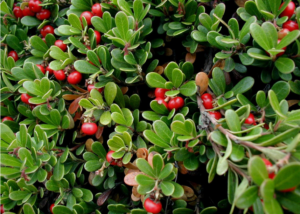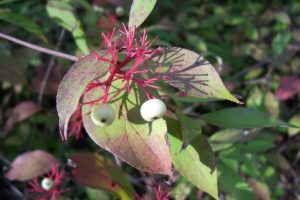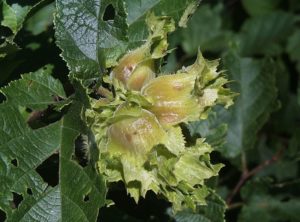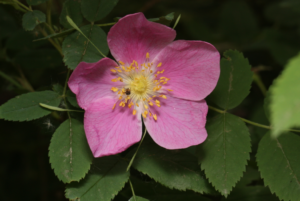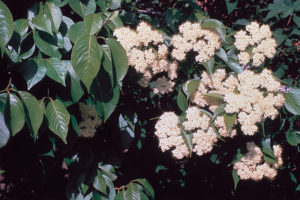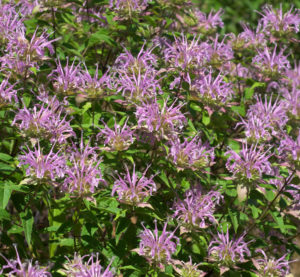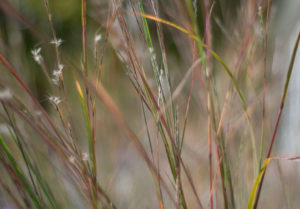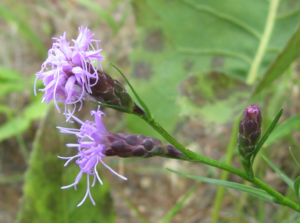The Garden on the Hill: Wild by Design
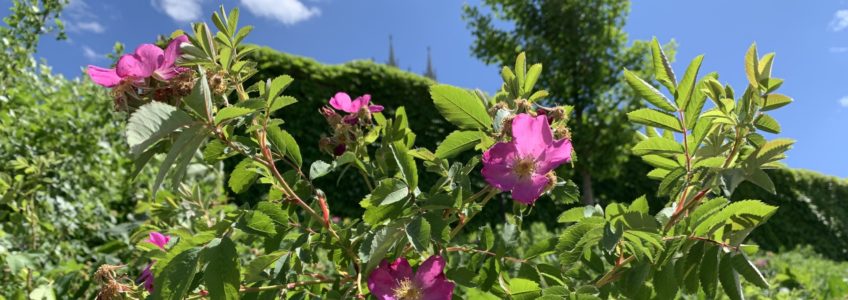
A lush, diverse landscape in the heart of downtown Guelph
Have you ever walked by the Civic Museum’s garden on the hill and thought “this looks wild”? If so, you’re not alone! Wild by design, our garden on the hill is home to over 60 different species of native plants existing in harmony to create an ecologically diverse, low-maintenance, and beautiful naturalized landscape.
From soil-stabilizing shrubs to colourful pollinators, the garden was designed to encourage a sustainable eco-system that benefits plants, wildlife, and people alike. Spring through fall, bumblebees, birds, and butterflies frequent the garden as they eat seeds, gather materials for nests, and pollinate flowering blooms.
“What exactly is planted in the garden,” you ask? This National Garden Day, we’re highlighting a few of our favourites:
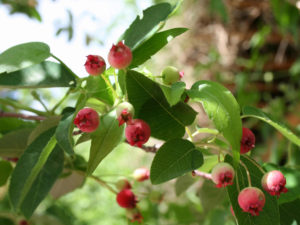
Spring Flurry Serviceberry
Amalanchier laevis
Spring Flurry Serviceberry is a deciduous tree which produces large showy white flowers in spring, and dark green foliage which emerges coppery-bronze in the summer and a brilliant orange in the fall. Perhaps most notable, these trees produce berries in late spring which can be harvested and used in recipes; the flavour is described as somewhere between a blueberry, apple, and sweet cherry.
Bloom Time: May to June
Ecological Benefits: Tolerant of urban pollution. Attracts birds.
Did you know: Inspired by Lt. Col. John McCrae’s poem “In Flanders Fields”, our Serviceberry trees are planted row by row and draw your eye towards the “Remember Flanders” statue outside of the Civic Museum.
Bearberry
Arctostaphylos uva-ursi
Bearberry is a low-growing ground cover with tear-dropped shaped, leathery, dark green leaves. Between March and June, white or pale pink flowers appear in small numbers. The name “Bearberry” comes from the small cherry red berries produced in late summer and fall which bears, among other wildlife, absolutely adore.
Bloom Time: April to June
Ecological Benefits: Attracts hummingbirds, butterfly larvae, birds and bees. Controls soil erosion on slopes and hillsides. Drought and salt tolerant.
Did you know: Bearberry seeds are largely pollinated by the wind!
Red Osier Dogwood
Cornus sericea
Red Osier Dogwood is a loose, multi-stemmed shrub with conspicuous red twigs. Dense clusters of white blossoms are followed by clusters of pea-sized white berries.
Bloom Time: May to June
Ecological Benefits: Larval host to the Spring Azure moth. Attracts birds and butterflies. Offers dense cover for wildlife. Extensive root system stabilizes soil and prevents erosion.
Did you know: Birds like the downy woodpecker, robin, cedar waxwing and purple finch depend on its fruit.
American Hazelnut
Corylus americana
American Hazelnut is a dense, round shrub with yellowish-brown catkins that appear in late winter and early spring. This plant produces edible nuts with papery husks that mature between July and October. In the fall its leaves turn bright yellow and then a deep wine-red.
Bloom Time: April to June
Ecological Benefits: The nuts are eaten by squirrels, deer, turkey, woodpeckers, pheasants, and other animals. Leaf beetles, walking sticks, plant bugs, leafhoppers, and moth caterpillars feed on the leaves and stems. Excellent nesting site for birds and provides cover for wildlife.
Did you know: The genus name, Corylus (Greek), came from the word kopus (helmet) in reference to the bract covering the top of the nut.
Prickly Wild Rose
Rosa acicularis
Prickly Wild Rose is a deciduous shrub growing up to 4 feet tall with prickly stems and pink, 5-petaled flowers. The flowers are followed by smooth rosehips.
Bloom Time: June to July
Ecological Benefits: Provides nesting materials and structure for native bees. Pollinator for bees and butterflies and attracts birds. Deep route system stabilizes soil and prevents erosion.
Did you know: Rosehips can be used for jelly and teas and the flowers are edible!
Nannyberry
Viburnum lentago
Nannyberry is a multi-stemmed deciduous shrub with large clusters of creamy white flowers in spring, showy blue fruit in the fall, and a beautiful red brick fall colour.
Bloom Time: May to July, fruit ripens in fall
Ecological Benefits: Highly tolerant of urban pollution. Provides nesting and cover for small birds and animals. Attracts songbirds and beneficial insects. Larval host and nectar source for the Spring Azure moth.
Did you know: Also called Sheepberry!
Wild Bergamot
Monarda fistulosa
A perennial flower native to North America, Wild Bergamot is a member of the mint family and blooms in the early to late summer. Its flowers can be lavender, pink, and purple and are two-lipped.
Bloom Time: June to September
Ecological Benefits: Attracts bees, butterflies, hummingbirds, and birds. Drought tolerant.
Did you know: Essential oils from the seeds have anti-bacterial properties and have been extracted for over 100 years!
Heath Aster
Symphyotrichum ericoides
A small aster with closely crowded flowers, Heath Aster’s hairy stems are green initially but become brown as the plant matures. The flowers are white and yellow with a daisy-like appearance and have no noticeable floral scent.
Bloom Time: August to October
Ecological Benefits: Attracts bees, wasps, flies, butterflies, skippers, moths, beetles, and plant bugs. Salt and drought tolerant. Pollinators and wildlife will flock to asters in late summer and fall as they prepare for winter and migration.
Did you know: As migrating birds pass through, insects provided by the asters supply a critical source of protein for their journey ahead.
Wild Geranium
Geranium maculatum
Wild Geranium is a perennial plant with tender, spring, pinkish-purple blooms. Its dissected leaves turn red and orange in the fall.
Bloom Time: June to July
Ecological Benefits: Attracts bees, butterflies, flies, and skippers. Certain species of moths feed on the foliage and flowers.
Did you know: Chipmunks love eating the seeds!
Little Bluestem
Schizachyrium scoparium
Little Bluestem is a bunchgrass with fine-textured foliage that forms dense mounds. Slender blue-green stems reach 3 feet by September and become radiant mahogany-red in the fall. Flowering culms rise in mid to late summer to produce intricate blooms that become translucent in the fall.
Bloom Time: June to December
Ecological Benefits: Provides food, shelter, and nesting material to wildlife and attracts birds and pollinators. Many different types of grasshoppers, beetles, spittlebugs, leafhoppers, and other herbivorous insects eat the vegetation. Drought tolerant.
Did you know: Little Bluestem grows throughout all southern Canadian Provinces, and all 48 Continental United States!
Cylindric Blazing Star
Liatris cylindracea
These stunning wildflowers grow from rounded or elongated corms. Their hairless stems feature a loose cluster of 2 to 28 pink and purple flowerheads that closely resemble sparklers.
Bloom time: August
Ecological Benefits: Attracts butterflies and bees. Birds feed on the seeds. The sweet, thickened rootstocks are attractive to voles and other herbivorous mammals. Drought tolerant.
Did you know: Cylindric Blazing Star roots can reach depths of 15 feet!
Using this post as a jumping off point, we encourage you to see how many plant species you can spot during your next visit to the museum. The garden on the hill also makes a perfect place for a picnic lunch or tranquil space for reflection!
Don’t forget to keep your eyes peeled as the garden changes with the seasons; be the first to share photos of new blooms on the hill with the hashtags #MuseumBlooms and #GuelphMuseums.

